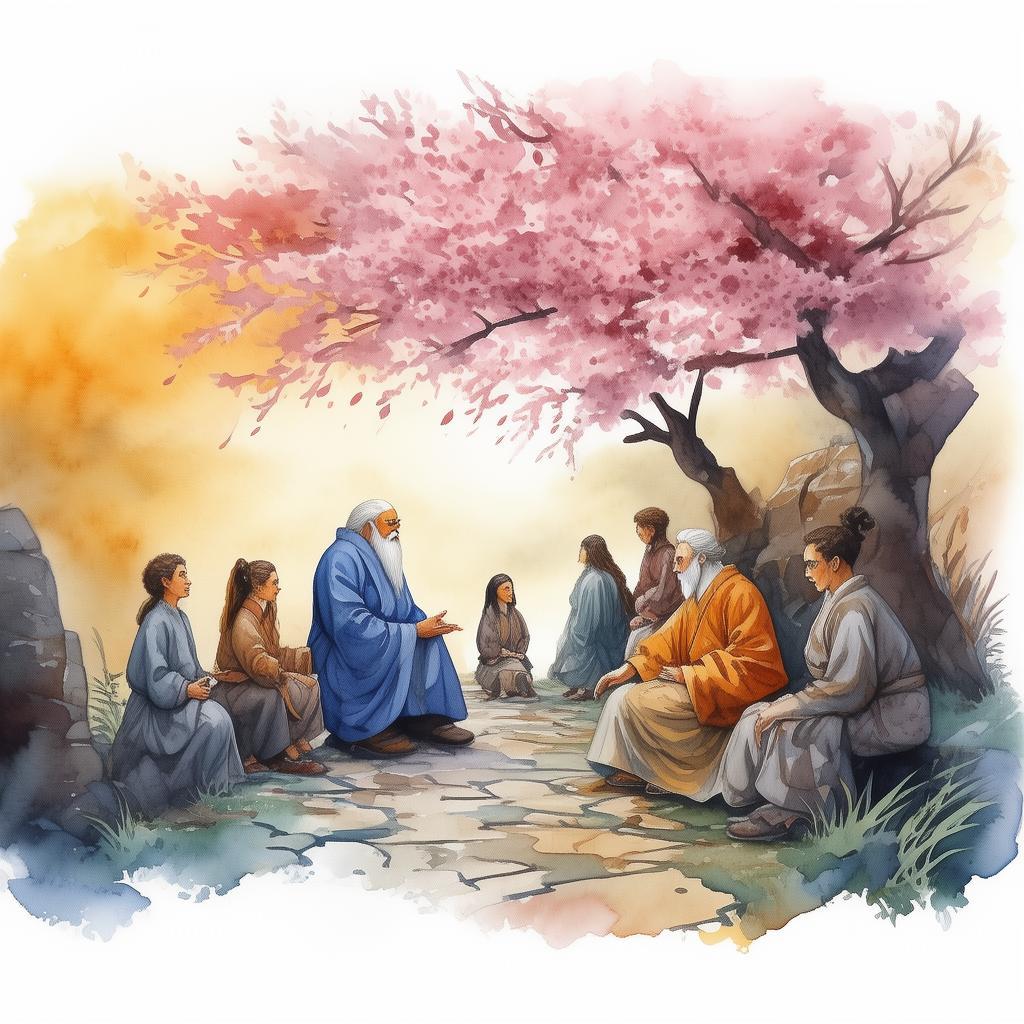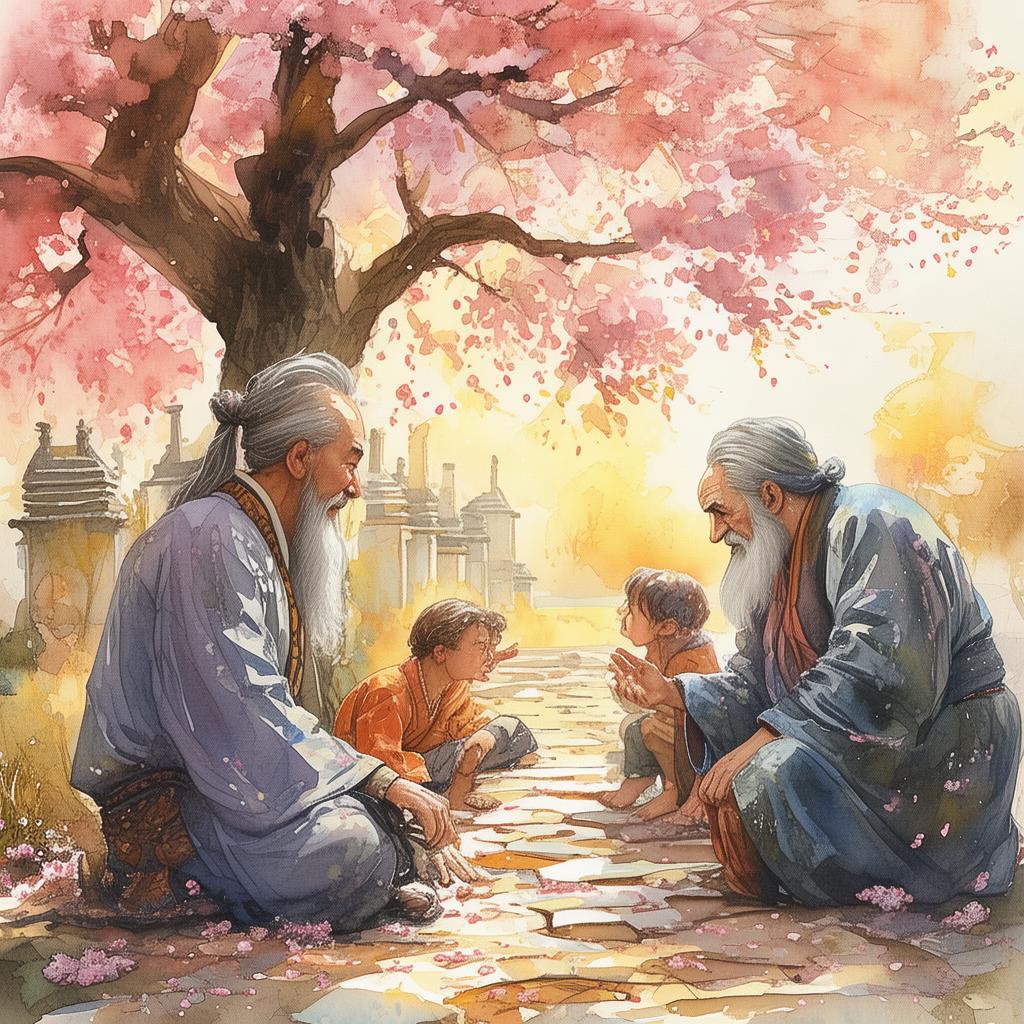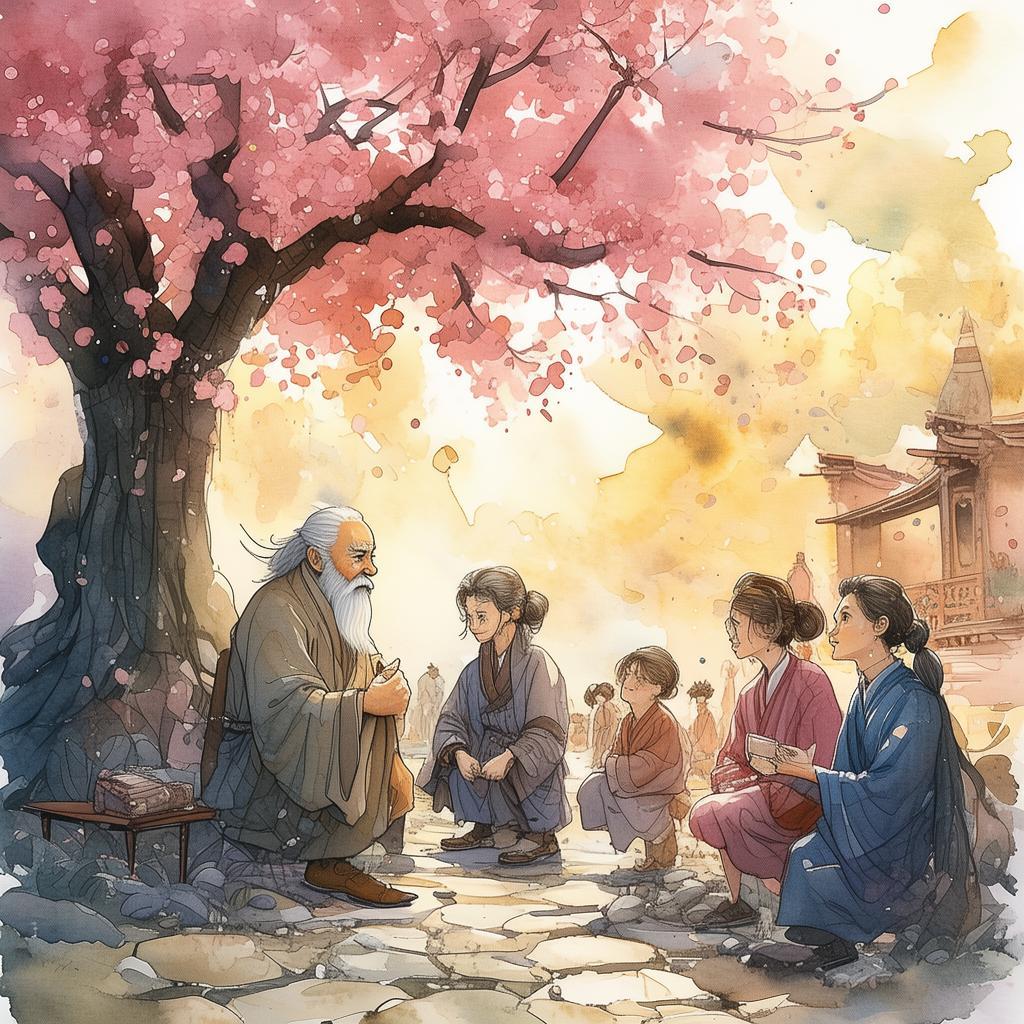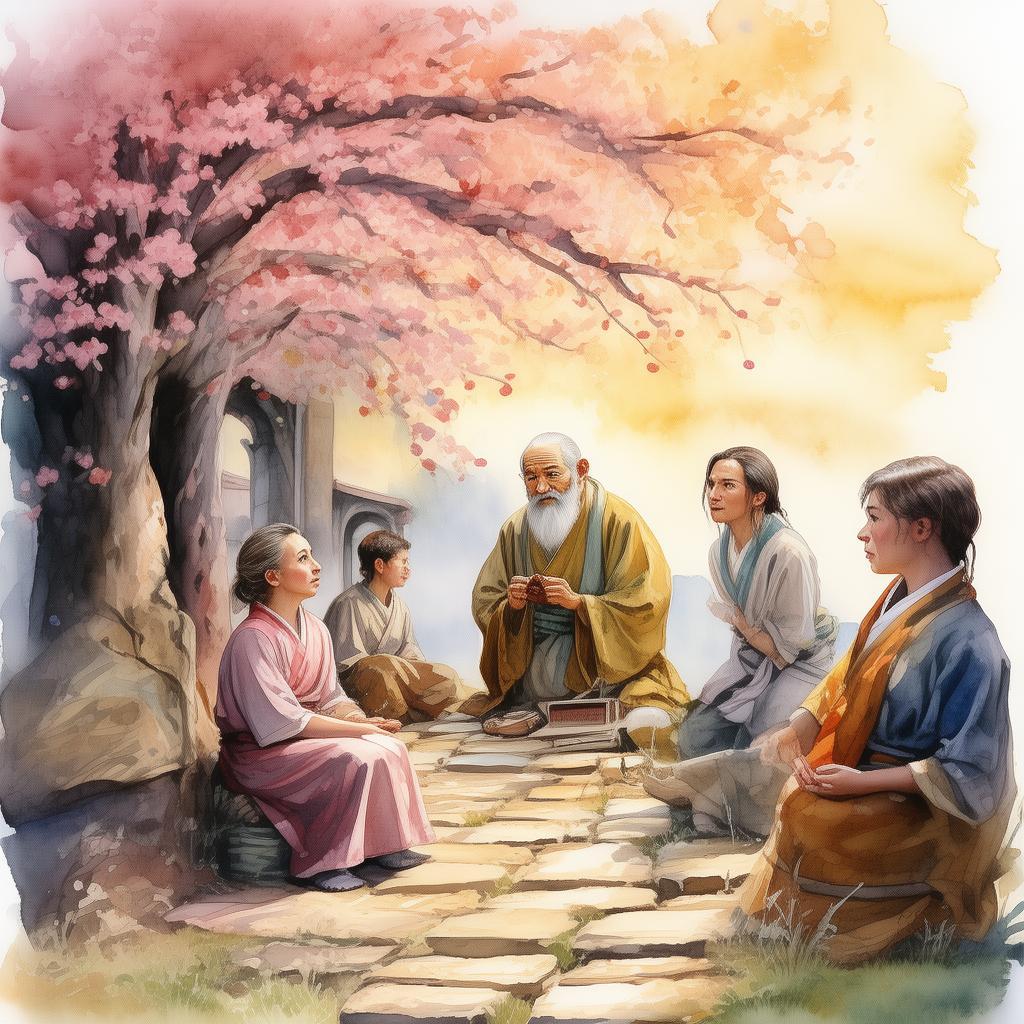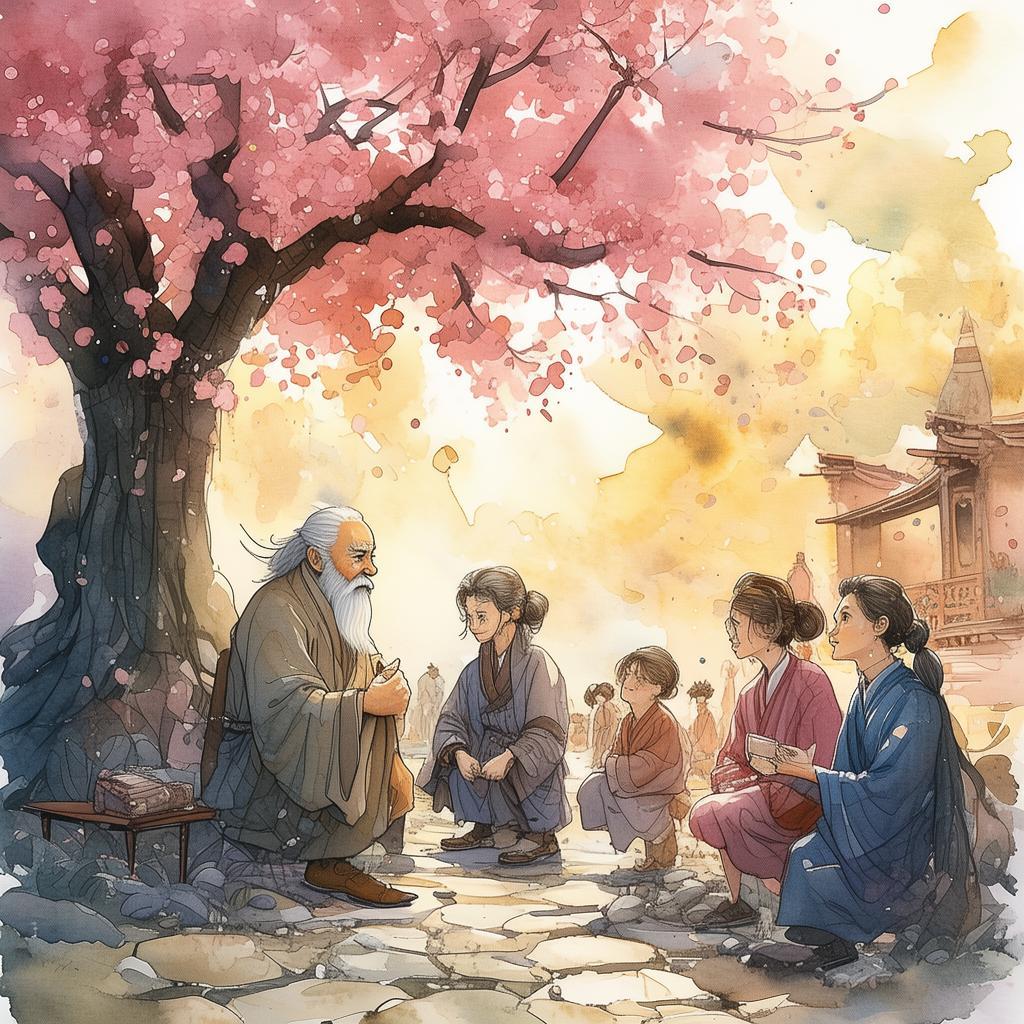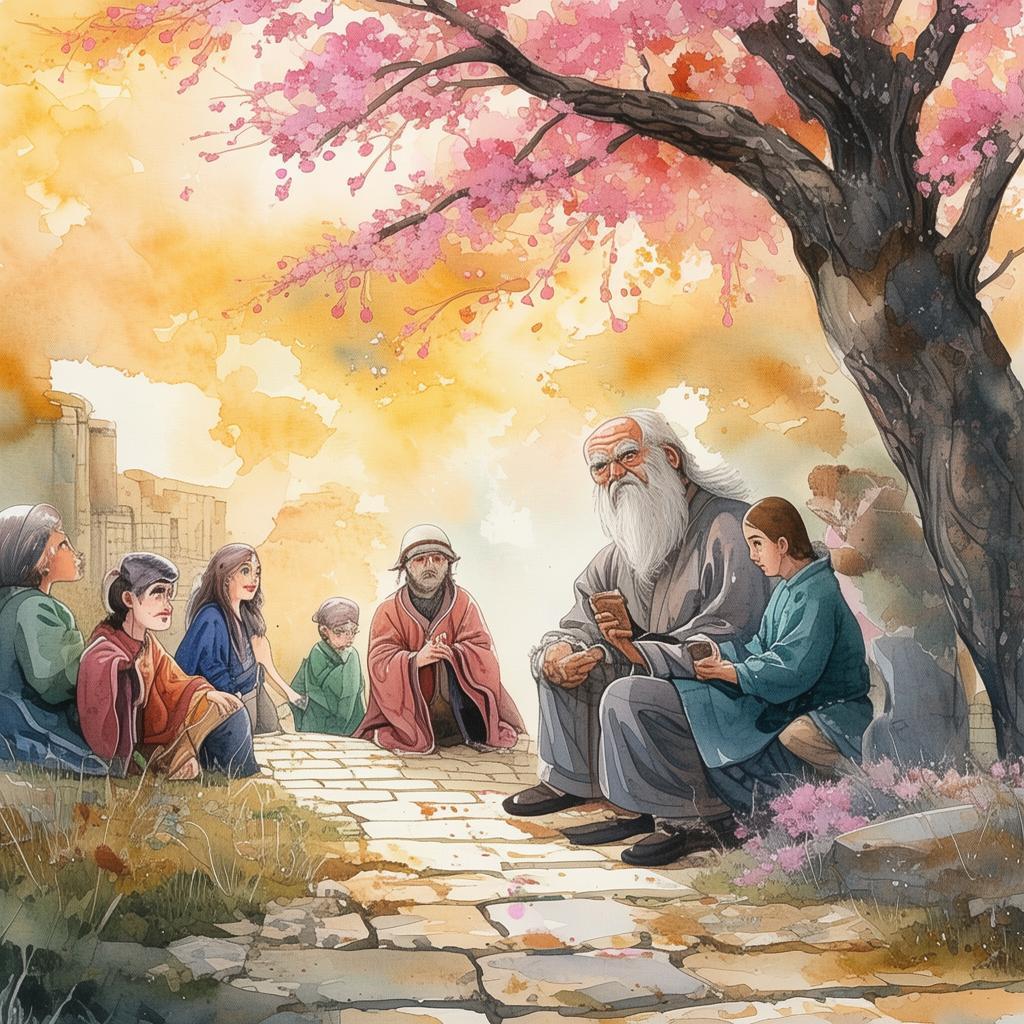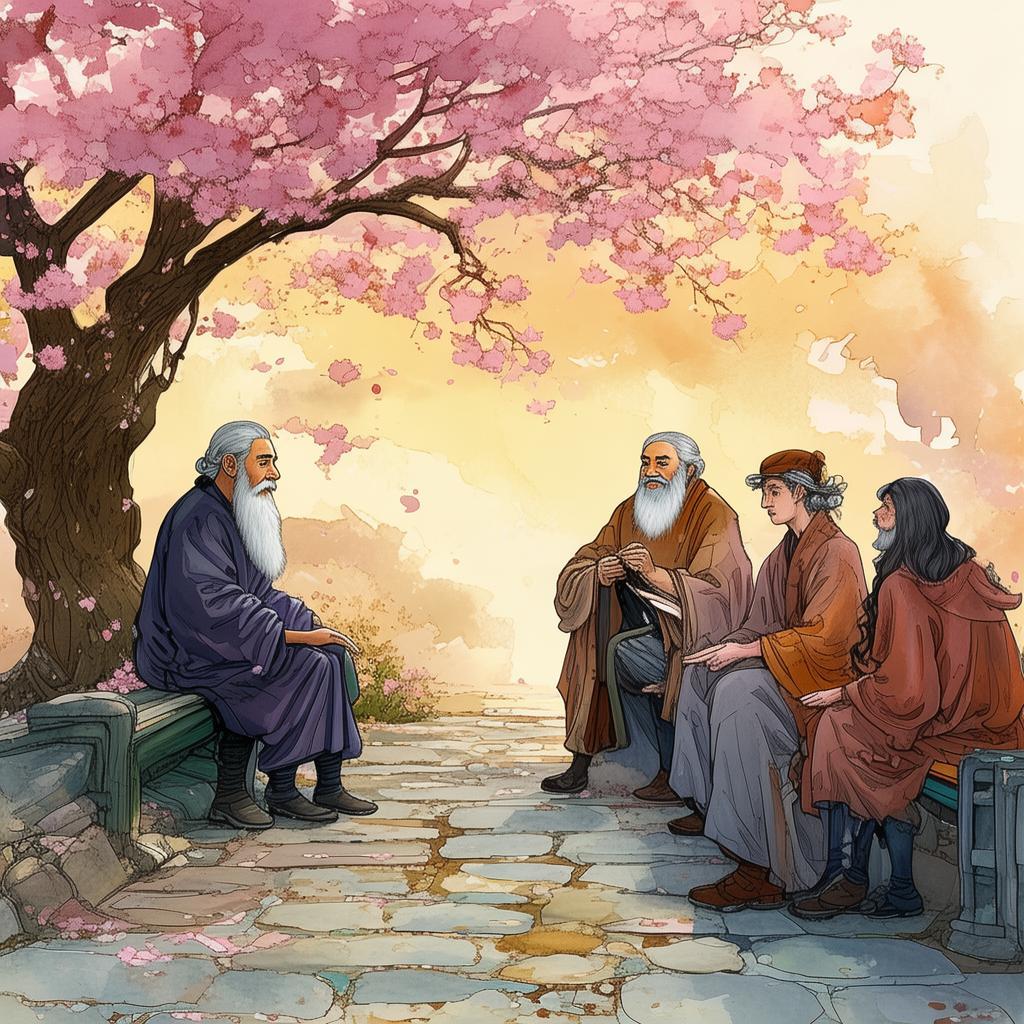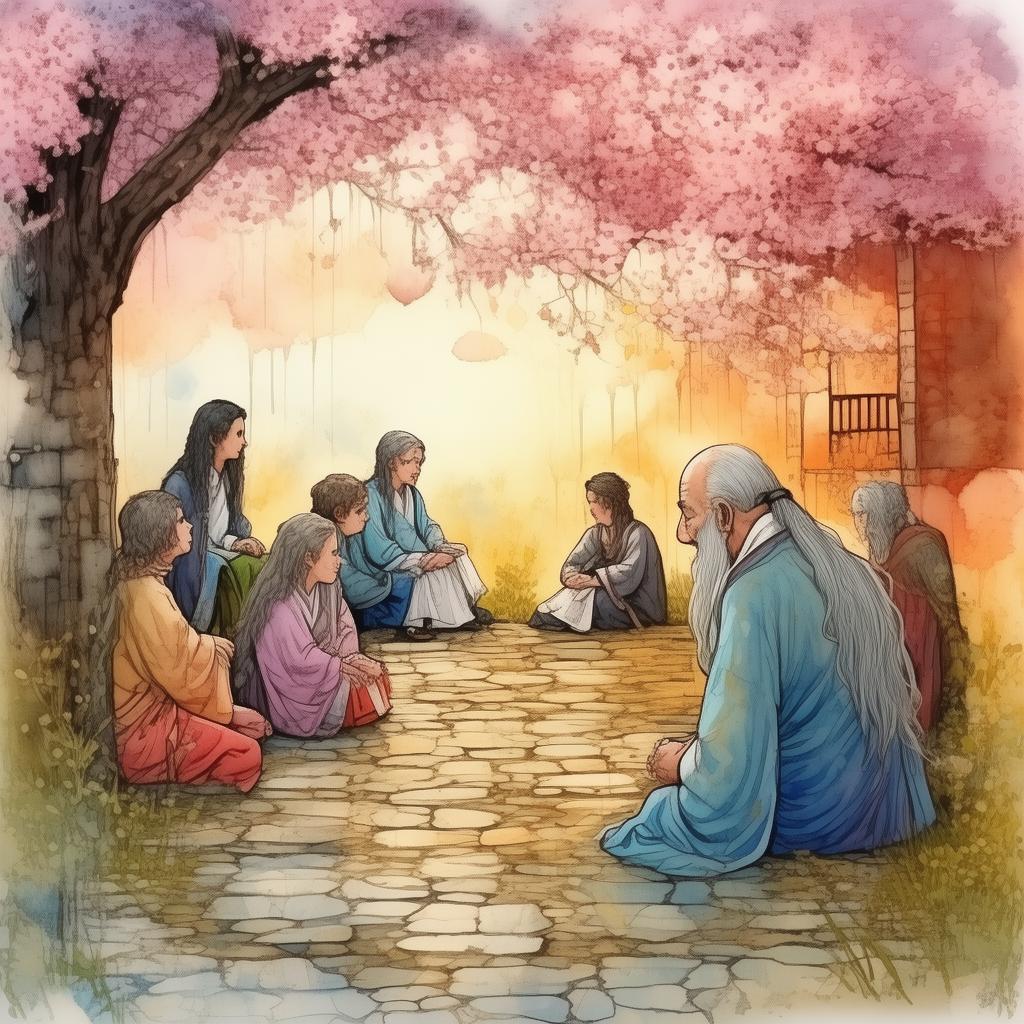Whispers from the Tombs: The Engraved Secret
In the heart of the ancient city of Chang'an, nestled among the remnants of a bygone era, stood the grand mausoleum of Emperor Wu, the first emperor of the Han Dynasty. The tomb, an architectural marvel of its time, had been sealed for centuries, its secrets buried alongside the emperors' remains. In the 21st century, a young scholar named Li Wei, with a passion for ancient calligraphy and history, had embarked on a quest to uncover the enigmatic tales that lay within the walls of this ancient mausoleum.
Li Wei had spent years poring over ancient texts, deciphering cryptic scripts, and studying the art of calligraphy. It was during one of his late-night sessions in the university's library that he stumbled upon a peculiar mention of a forgotten tomb that contained a series of enigmatic inscriptions. The texts spoke of a secret that could alter the course of history if ever revealed. Intrigued and driven by a thirst for knowledge, Li Wei decided to embark on a journey to Chang'an to uncover the truth.
Upon arriving in Chang'an, Li Wei set out to find the mausoleum. The city was a labyrinth of narrow alleys and towering ancient structures, each whispering tales of a bygone era. With the help of an elderly historian named Master Zhang, Li Wei finally located the mausoleum, a structure that seemed to be a part of the very earth itself.
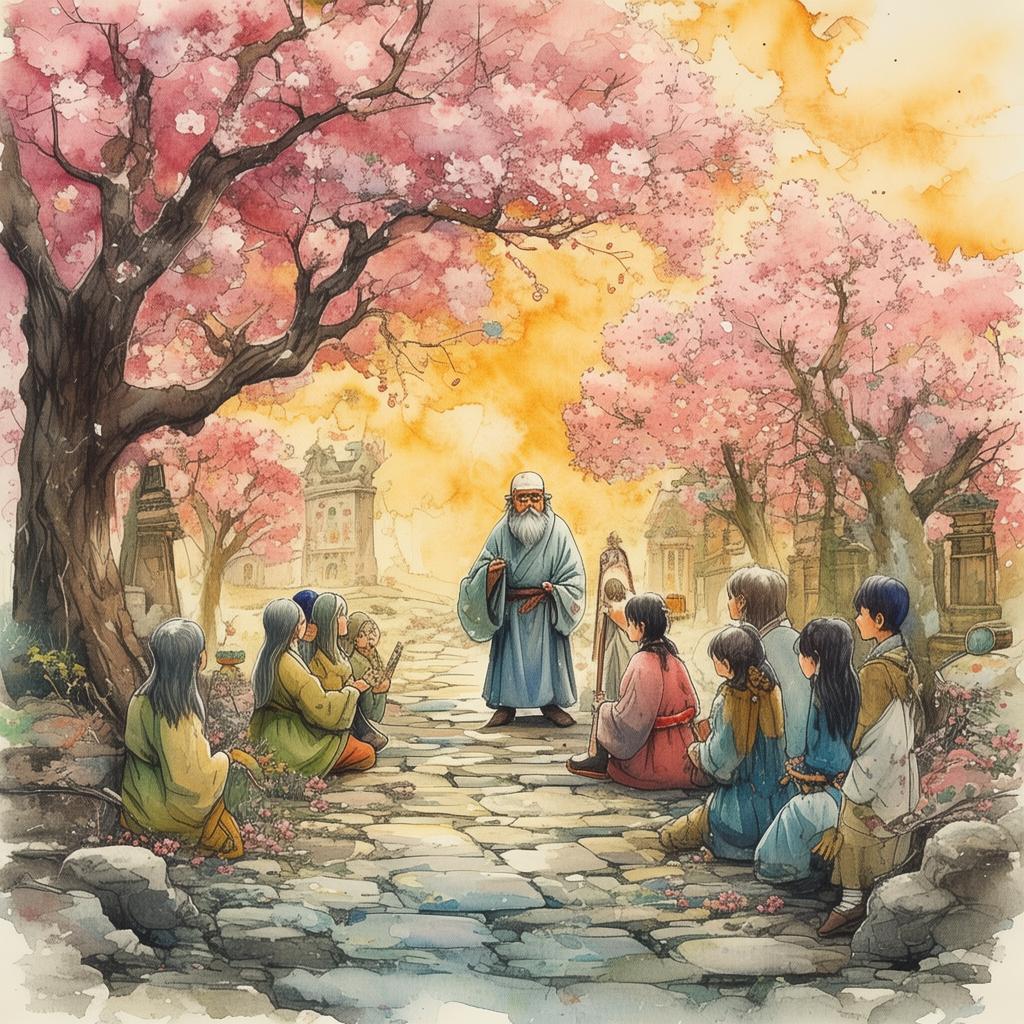
The tomb's entrance was a massive stone door, covered in intricate carvings that seemed to be a part of the very earth itself. Li Wei, with the help of Master Zhang, managed to crack the ancient lock, and they stepped into the darkness within.
The tomb was a vast underground chamber, lit by flickering torches that cast eerie shadows on the walls. The air was thick with the scent of damp earth and the distant echo of ancient whispers. As they ventured deeper, they came across a series of stone tablets, each adorned with calligraphy that seemed to tell a story of its own.
One tablet, in particular, caught Li Wei's eye. The calligraphy was unlike anything he had ever seen, filled with arcane symbols and cryptic messages. He could feel the power of the ancient words as they seemed to come alive, speaking of a secret that had been hidden for millennia.
Li Wei's heart raced as he deciphered the enigmatic script. The tablet spoke of a treasure, not of gold or jewels, but of knowledge and wisdom that could change the world. The treasure was not a physical object, but rather a collection of scrolls that contained the secrets of the ancient dynasties, including the art of calligraphy itself.
As Li Wei continued to read, he realized that the scrolls were not just a collection of texts, but a guide to an ancient ritual that could unlock the power of the tomb's guardian spirit. The guardian, it seemed, had been protecting the scrolls for centuries, ensuring that only one worthy scholar could claim them.
Li Wei knew that he was the chosen one. He had spent his entire life studying the art of calligraphy, and now, it seemed, his destiny was intertwined with the ancient tomb. With Master Zhang by his side, Li Wei prepared to face the guardian.
The guardian appeared before them, a spirit of ancient power, its form shifting between human and animal. It spoke in riddles, testing Li Wei's knowledge and resolve. With each answer, Li Wei grew stronger, his mind sharp and his resolve unwavering.
Finally, the guardian revealed itself to be the spirit of Emperor Wu, who had once been a master calligrapher himself. Emperor Wu's spirit recognized Li Wei's dedication and wisdom, and it granted him access to the scrolls.
Li Wei took the scrolls, knowing that he had to find a way to preserve the knowledge they contained. He returned to Chang'an, determined to share the wisdom of the ancient dynasties with the world.
The journey was fraught with challenges, as Li Wei faced those who sought to possess the scrolls for their own gain. With each obstacle overcome, Li Wei's understanding of the ancient scripts deepened, and he began to realize the true power of calligraphy – not just as an art form, but as a tool for understanding the human condition.
In the end, Li Wei's discovery was not just of a treasure, but of a legacy. The scrolls contained not only the secrets of the ancient dynasties but also the essence of calligraphy itself, a language that could bridge the gap between the past and the present.
The story of Li Wei and the ancient tomb became a legend, a tale of courage, knowledge, and the enduring power of calligraphy. And so, the wisdom of the ancient dynasties lived on, passed down through generations, a testament to the enduring spirit of human curiosity and the power of the written word.
✨ Original Statement ✨
All articles published on this website (including but not limited to text, images, videos, and other content) are original or authorized for reposting and are protected by relevant laws. Without the explicit written permission of this website, no individual or organization may copy, modify, repost, or use the content for commercial purposes.
If you need to quote or cooperate, please contact this site for authorization. We reserve the right to pursue legal responsibility for any unauthorized use.
Hereby declared.
